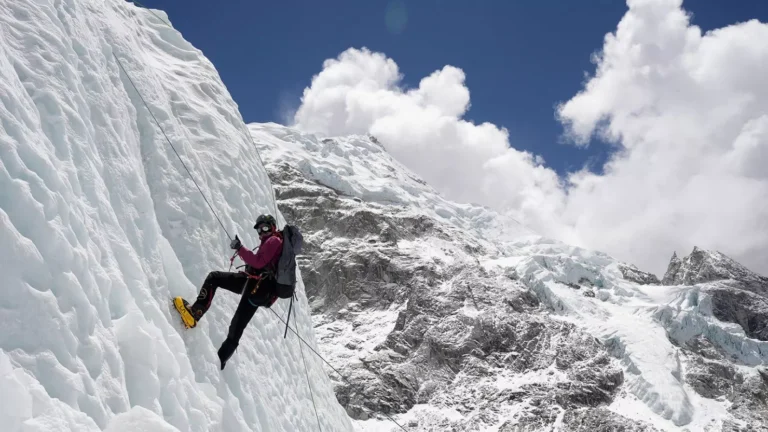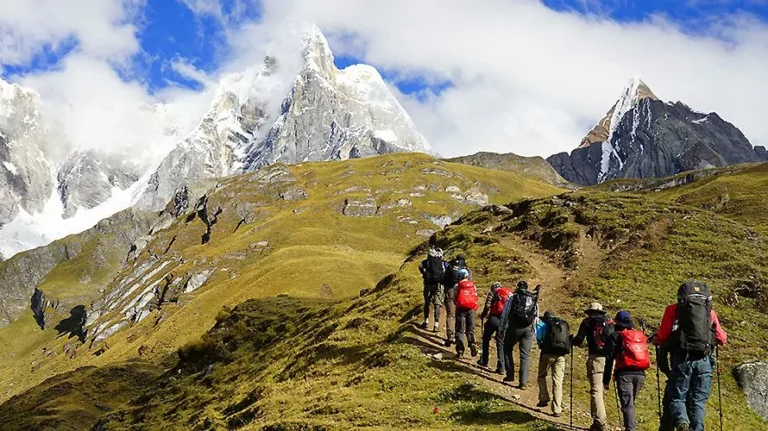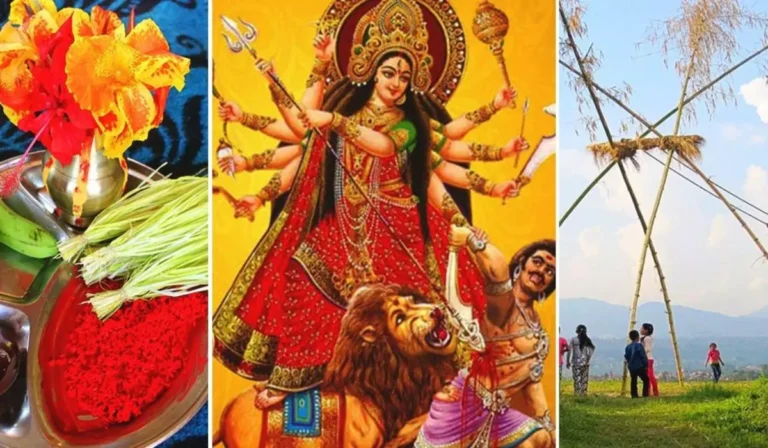- PUBLISHED
Festivals and Holidays of Nepal You Need To Experience

Nepal is a country rich in colors, traditions, and deep spiritual values. Every month brings something new for travellers to enjoy. This small nation holds a wide mix of cultures and ethnic groups. Because of that, Nepal celebrates many unique festivals. These events are more than just traditions. They show the lifestyle of Nepali people and bring family members and neighbours together.
If you plan to visit Nepal, these festivals give you the best chance to see local life up close. You will see people gathering in the streets of Kathmandu. You will hear singing and dancing in the village trails. You will feel the joy and energy of Nepalese people during every celebration.
In this blog, you will discover major holidays in Nepal. These are the holidays of Nepal that people celebrate with heart and devotion. Whether you want to join the holy rituals or enjoy the lively street parades, there is always something to experience in the festivals of Nepal.
Let’s explore some of the major Nepal festivals that you must experience.
Dashain – The Most Important Hindu Festival
Dashain is the biggest Hindu festival in Nepal. It lasts for 15 days. People celebrate this festival to honour the goddess Durga. It is a time to mark the victory of good over evil. During Dashain, people travel back to their hometowns. Families come together to receive tika and jamara from elders. It is a time when people wear new clothes and share blessings with family members. Many homes sacrifice animals as part of the ritual.
Dashain falls around September or October. It is one of the best time to visit Nepal. You can feel the festival marking the deep faith of the Nepalese people. The first day is called Ghatasthapana. On this day, people plant seeds of barley, which grow into jamara. The tenth day is called Vijaya Dashami. On this day, elders bless the young with tika and jamara. The last day ends with Kojagrat Purnima, where people stay awake through the night and worship the goddess of wealth.

Tihar – Festival of Lights and Sibling Love
Tihar is the second biggest festival of Nepal. It comes shortly after Dashain and lasts for five days. Each day has a special meaning. The festival honours both gods and animals. It is also known as Deepawali.
On the first day, people worship crows. On the second day, dogs are honoured. On the third day, cows are worshipped in the morning. At night, people celebrate Laxmi Puja. They light oil lamps around their houses and draw colorful rangoli on the floor. The fourth day is for oxen and also marks the Newari New Year. The final day is Bhai Tika. Sisters pray for the long life of their brothers by putting a seven-colored tika on their forehead.
Tihar is full of light music and joy. People sing deusi and bhailo in the evening. Kids and adults go door to door singing traditional songs and receive gifts and sweets in return. The whole country shines with diyas and candles.
If you visit Nepal during Tihar, you will experience warmth and beauty in every corner. The streets look magical and every home becomes a place of light and celebration.

Holi – Festival of Colors and Unity
Holi is one of the most fun festivals in Nepal. It is one of the most colorful and playful festivals of Nepal. It falls in March and welcomes the arrival of spring. People throw colors and water on each other. It brings everyone together, no matter their age or background. Tourists love this day because it feels joyful and free.
People celebrate by throwing dry colors and colored water on each other. They dance, sing and enjoy sweet foods like sel roti and gujiya. The celebration starts in the hills and then moves to the Terai region the next day. During Holi, the streets of Kathmandu become full of music, colors and laughter.
Holi shows how Nepal celebrates togetherness and life. You will see friends and strangers join in the colors of happiness. This Nepali festival spreads love and joy in the purest way. It shows how deeply people celebrate life and unity.

Lhosar – The New Year of Ethnic Groups
Lhosar is the New Year celebrated by several ethnic groups in Nepal, like the Tamang, Gurung and Sherpa communities. There are three main types of Lhosar: Tamu Lhosar, Sonam Lhosar, and Gyalpo Lhosar. Each with different dates and customs and is celebrated by different communities.
It usually takes place between December and February, depending on the group. People wear traditional dresses, perform dances, and visit monasteries. Families gather to enjoy food and share joy. Lhosar is more than just a holiday. It reflects the rich cultural roots of ethnic groups in Nepal. People wear traditional dress, cook special foods and visit monasteries. There are songs, dances and public gatherings. It is a time for family members to come together and begin the year with hope.
Lhosar is a bright and cheerful festival. It reflects the diversity and beauty of Nepal festivals beyond just Hindu and Buddhist roots.

Indra Jatra – Festival of the Living Goddess
Indra Jatra is a vibrant festival marking the end of the monsoon. It is one of the most lively and exciting festivals of Nepal. It is mainly celebrated in Kathmandu by the Newar community. The festival honours Indra, the god of rain and also marks the time to give thanks for a good harvest. People raise a tall wooden pole called Yosin in Durbar Square. There are masked dances and chariot processions.
The main highlight is the chariot procession of the living goddess Kumari. She is a young girl chosen from the Newar community who is believed to be a living deity. Her chariot is pulled through the crowded streets of Kathmandu.
This Nepal festival brings old traditions to life. People celebrate with drums, singing and sacred dances. The air feels full of history and belief. The street of Kathmandu fills with music and cheers. It is one of the most exciting festivals of Nepal that you can see. Celebrating Indra Jatra can be a great thing to do in Kathmandu, if you are around there at this time, as you’ll witness one of the most magical festivals of Nepal.

Bisket Jatra – Festival of the New Year
Bisket Jatra is a unique festival celebrated in Bhaktapur during the Nepali New Year in April. It is a festival marking the end of one year and the start of another. People pull massive wooden chariots through the narrow streets. There is singing and dancing in every corner. The energy is high, and the entire town comes alive. It’s a special event that shows the power of tradition and community. This festival is a great way to see how Nepal celebrates both history and new beginnings.
There are rituals, dances and lots of cheering. People throw flowers and shout blessings. It feels like a festival of raw energy. This is one of the best holidays in Nepal to see local traditions in full force. It is exciting, intense and full of life.

Janai Purnima – Sacred Thread Festival
Janai Purnima is a Hindu festival celebrated in August. Men change their sacred thread and take holy dips in rivers, while others tie a colored thread around the wrist for protection. People also visit temples in high places like Gosainkunda. At the same time, the Newar community celebrates Kwati Purnima.
The day is also important for the Newar community. They prepare a special soup called Kwati made from nine types of beans. It is believed to bring strength and balance during the monsoon season.
This is one of those Nepal festivals where health, faith and food come together. It is a quiet but meaningful holiday.

Teej – Festival for Women and Wellness
Teej is a festival mainly celebrated by Hindu women. It usually falls in August or early September. Married and unmarried women fast, pray for their husbands or future partners, and dress in bright red clothes. There is singing and dancing in temples, homes, and public spaces. The Pashupatinath Temple becomes a center of celebration. Teej shows the strength, devotion, and joy of Nepalese women.
This Hindu festival is filled with music and devotion. Even unmarried women join the celebration to pray for a good future. Women sing old songs that share stories of love, hardship and strength. Teej is one of the most emotional and powerful Nepalese festivals. It gives voice to women and brings them together in joy and faith.

Maha Shivaratri – Night of Lord Shiva
Maha Shivaratri is a holy night dedicated to Lord Shiva. It is a powerful Hindu festival celebrated in February or March. On this day, thousands of devotees visit the Pashupatinath Temple, one of the holiest sites in Nepal. The temple and streets of Kathmandu are filled with sadhus (holy men), music, and the smell of incense. People fast, chant prayers, and stay awake all night to worship.
The whole temple area becomes spiritual and intense. You will see people lighting oil lamps and singing praises to Shiva. Even if you are not religious, you will feel the energy in the air. This is one of the most spiritual holidays in Nepal.
This festival is celebrated in Kathmandu in a grand way. You will feel a spiritual energy in the air. Even non-Hindus can visit and witness the deep faith of the Nepalese people.

Conclusion
Nepal festivals are more than just religious or cultural events. They are moments of joy and celebration where Nepalese people come together with their family members, friends, and communities. Whether it’s the vibrant energy of Holi or the colorful processions of Indra Jatra celebrated in Kathmandu, each festival tells a story of Nepal’s diverse heritage.
If you’re planning your travel or trekking in Nepal, try to align your visit with one of these incredible festivals. So, whether you’re looking to explore the spiritual side of Nepal or simply want to enjoy the cultural vibe, these festivals of Nepal offer something for every traveller. Make sure you check the calendar and be part of an unforgettable experience that only Nepal celebrates with such heart.
Table of Content
Frequently Asked Questions
What are the most important festivals of Nepal?
Some of the most important Nepal festivals include Dashain, Tihar, Holi, Loshar, Indra Jatra, Maha Shivaratri, etc. These festivals are celebrated widely across the country by different ethnic groups and religious communities.
When is the best time to experience Nepal festivals?
Many of the major festivals happen between September and November, like Dashain and Tihar. However, Nepal celebrates unique festivals all year round, so there’s always something to experience during your holidays in Nepal.
Are Nepal holidays based on the lunar calendar?
Yes, most festivals of Nepal follow the lunar calendar. That’s why the dates change every year. It’s best to check the Nepali festival calendar before planning your trip.
Do people from all religions celebrate these festivals in Nepal?
Nepalese people come from many ethnic groups and follow different religions. While Hindu festivals like Dashain and Tihar are widely celebrated, Buddhist holidays like Buddha Jayanti are also important. Many people celebrate together, regardless of religion.
What should I expect during a festival in Kathmandu Valley?
Festivals celebrated in Kathmandu often include traditional dances, chariot processions, oil lamps, and rituals in historic temples. You’ll see locals wearing cultural dress and streets filled with music and joy.
Can tourists join in Nepal’s festivals?
Yes, visitors are welcome to join most public celebrations. Nepal festivals are a great way to learn about local culture, meet family members of hosts, and see how Nepalese people celebrate important days.
Are any Nepal festivals unique to specific regions?
Yes, some festivals like Bisket Jatra in Bhaktapur or Gai Jatra in the Kathmandu Valley are celebrated only in certain areas. These regional holidays of Nepal offer a deeper look into local traditions and customs.
Need help choosing a trail?
Connect with a local and plan your perfect trek.



